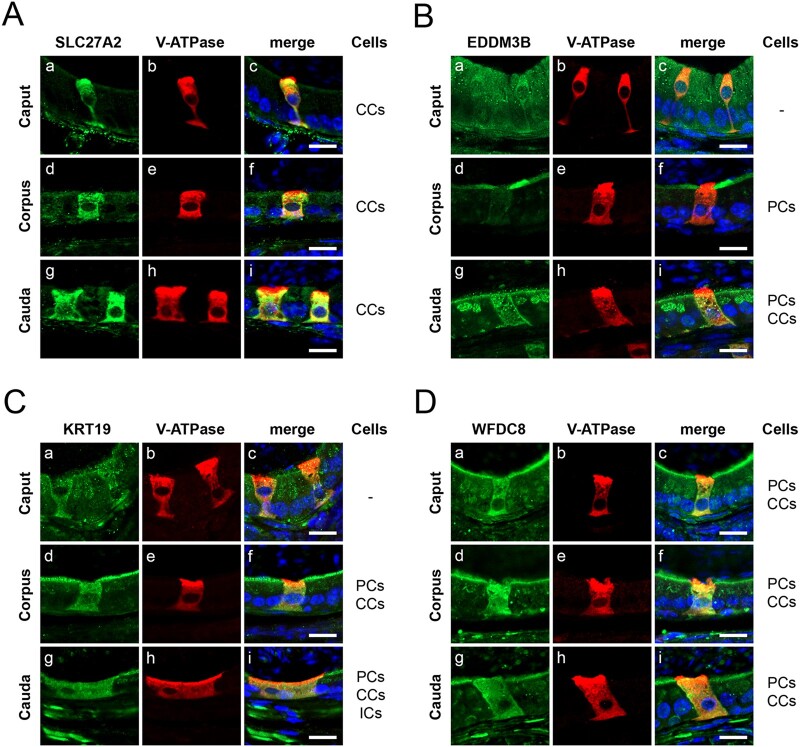Figure 4.
Specific localization of the epididymis-derived proteins SLC27A2, EDDM3B, KRT19 and WFDC8 in the mouse epididymis. Double immunolabeling of the epididymis-derived proteins (green) and V-ATPase B1 subunit (red) as a marker for epididymal clear cells (CCs), in the caput, corpus and cauda regions of mouse epididymis. (A) SLC27A2 (green) was specifically detected in CCs (red) on the overall epididymis segments. (B) EDDM3B (green) was detected in the apical portion of principal cells (PCs) located in the corpus; EDDM3B was also detected in CCs (red), and in the apical portion and Golgi-like organelles of PCs in the cauda. (C) KRT19 (green) was present in the apical portion of PCs and in CCs (red) in both corpus and cauda, and in interstitial cells in cauda. (D) WFDC8 (green) was identified in CCs (red) and in the apical portion of PCs all along the epididymal segments. Nuclei are labeled with DAPI in blue. Bars = 10 µm. DAPI, 4′,6-diamidino-2-phenylindole.

